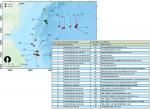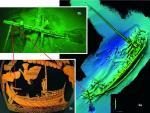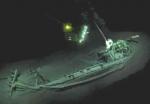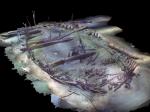Summary (English)
UNDERWATER ARCHAEOLOGICAL EXPLORATIONS ALONG THE BULGARIAN CONTINENTAL SHELF (Lyudmil Vagalinski – lvagalin@techno-link.com, Jonathan Adams, Kalin Dimitrov) Sixteen cores with a vibro-probe, each one with a maximum length of up to 6 m, and four cores with an 18-meter piston probe were taken. The geophysical surveys were performed with equipment mounted on Surveyor Interceptor ROV. The total scanned area was 142 sq. km. Twenty-three shipwrecks were explored in two zones: northern and southern. Eighteen new shipwrecks were identified and explored. Additional explorations of the ship (BSMAP_2016_Wreck_002) of the 10th century AD, discovered in 2016, were carried out. All the shipwrecks were examined by ROVs, which performed photo and video capture, photogrammetric imaging and 3D modeling, laser scanning, bathymetry and sampling for dating. Most ships were well preserved, including those lying at depths less than 150 m, which is above the level of the anoxic zone. The earliest shipwreck was Southstream_2014_Abs_add_BS_3509. It was a perfectly preserved hull about 18 m long, lying at a depth of 2021 m. The rudder, the control platform, the places of the oars, the mast located near the bow and the platform in front of it were visible. A similar ancient Greek ship was depicted on the Attic red-figure stamnos “The Vase with the Sirens” of 480 – 450 BC. The radiocarbon dating of the ship confirmed the date: end of the 5th or beginning of the 4th century BC. The shipwreck Southstream_2014_Abs_068 was a small double-edged single-masted ship of the 1st – 2nd century AD (radiocarbon dating: cal AD 30–130) about 12 m long and 3 m wide. The boards were fully preserved, the mast was in place, stern and bow platforms were visible. There were two tiller oars on the stern. The shipwreck BSMAP_ 2017_Wreck_008 was situated at 95 m in depth and was very well preserved. It was a large single-masted cargo sailing ship (23 m long and about 8 m wide) with a load of dozens of Anatolian amphorae lying on an open platform in the bow. In the right half of the stern was located the galley, which contained amphorae and other ceramic vessels. Judging from the amphorae and the radiocarbon dating (cal AD 140–335), the ship dated to the 3rd – 4th century AD. During the three years of the project, 61 shipwrecks were studied, most of them with very well preserved wooden hulls.
- Lyudmil Vagalinski - Archaeological Institute with Museum
- Kalin Dimitrov - Centre for Underwater Archaeology
Director
- Jonathan Adams - Centre for Maritime Archaeology - University of Southampton
Team
Research Body
- Archaeological Institute with Museum
- Centre for Maritime Archaeology - University of Southampton
- Centre for Underwater Archaeology





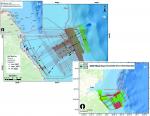
![Download [PDF]](/excavation/skins/fasti/images/results/download_sml.png)
